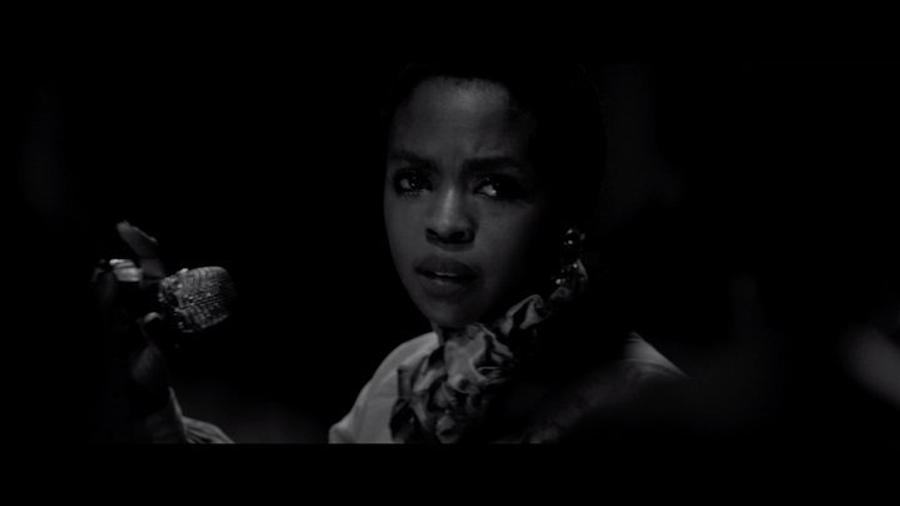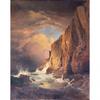Global Consortium of Museums Plan 48-Hour Stream of Artist Arthur Jafa’s Renowned “Love is the Message"
- June 25, 2020 17:22

The Smithsonian American Art Museum and the Hirshhorn Museum and Sculpture Garden, in consultation with the artist Arthur Jafa, have joined together to stream Jafa’s artwork “Love is the Message, The Message is Death” (2016) continuously for 48 hours on Hirshhorn.si.edu and AmericanArt.si.edu beginning at 2 p.m. ET Friday, June 26. This event is the first time the artist has authorized showing the video outside of a museum or gallery setting.
“I am thrilled for the opportunity, finally, to have as many people as possible see ‘Love is the Message, The Message is Death’,” said Jafa.

Joining the Hirshhorn and the Smithsonian American Art Museum in presenting the work online are 11 art museums and private collections in seven countries. This global consortium will make the seven-and-a-half-minute artwork simultaneously accessible on their websites. Each participating museum and collection holds an edition of the artwork. In the current moment, the artist and many holders of this artwork agreed that it should be accessible beyond museum walls and to people around the world who might not otherwise encounter it.

The global consortium of participating museums and collections include the Dallas Museum of Art; Glenstone Museum; the High Museum of Art in Atlanta; The Museum of Contemporary Art Los Angeles; The Studio Museum in Harlem, Julia Stoschek Collection Berlin; Luma Arles in France and Luma Westbau in Zürich; Palazzo Grassi – Punta della Dogana – Pinault Collection; The Stedelijk Museum Amsterdam; and the Tate in London. [Read this essay on Jafa's piece by curator Helen Molesworth.]
“Love is the Message, The Message is Death” offers a powerfully moving montage of original and appropriated footage, set to Kanye West’s gospel-inflected song “Ultralight Beam,” that explores the mix of joy and pain, transcendence and tragedy that characterize the Black American experience. Extolled by The New Yorker as “required viewing,” the film points to the ongoing violence and racism against Black people that is foundational to U.S. history and continues to play out in the present. It also shows how Black Americans have taken these experiences and created cultural, political and aesthetic achievements that are intrinsic to the national identity.

Displayed at the Hirshhorn in the 2017 exhibition “The Message: New Media Works,” Jafa’s video was acquired jointly by the Smithsonian American Art Museum and the Hirshhorn in 2018.
“Together with SAAM, we commit to making one of the critical works of our time radically accessible while Smithsonian doors are closed,” said Hirshhorn Director Melissa Chiu. “Our mission is to create meaning and context through the display and preservation of art of our time. With this comes social responsibilities. We grieve with the families and communities who are subject to ongoing injustices, racism and brutality. Every Black life matters. It is Arthur Jafa’s intention that his work be shared across the world.”
“The Smithsonian American Art Museum, along with the Hirshhorn as part of the national collections of the Smithsonian, believe it is necessary to acknowledge the ongoing violence and racial inequality faced by Black Americans,” said Stephanie Stebich, the Margaret and Terry Stent Director of the Smithsonian American Art Museum.
“Learning from Arthur Jafa’s powerful artwork is one way to do so. We acknowledge that sharing art is not enough to effect social change. At the same time, we believe artists’ insights into complex histories and lived experiences are meaningful and motivating.”
Secretary of the Smithsonian Lonnie G. Bunch issued a powerful statement about racial injustice in the U.S. May 31. The Smithsonian American Art Museum and the Hirshhorn have each built on these statements that are also available online.
Two roundtable panel discussions convened by the artist will take place Saturday, June 27, at 2 p.m. ET and Sunday, June 28, at 2 p.m. ET on sunhaus.us. Participants in the panel Saturday may include Peter L'Official, assistant professor of literature at Bard College; Josh Begley, artist; Elleza Kelley, writer and doctoral candidate at Columbia University; and Thomas Lax, curator of media and performance at the Museum of Modern Art, New York. Participants Sunday may include Aria Dean, artist and assistant curator of net art and digital culture at Rhizome; Rashaad Newsome, artist; Isis Pickens, First Lady of Los Angeles’ Zion Hill Baptist Church; and Simone White, poet and assistant professor of English at the University of Pennsylvania; both panels are moderated by Tina Campt, the Owen F. Walker Professor of Humanities and Modern Culture and Media at Brown University.
Arthur Jafa (b. 1960, Tupelo, Mississippi) is an artist, filmmaker and cinematographer. Across three decades, Jafa has developed a dynamic practice comprising films, artefacts and happenings that reference and question the universal and specific articulations of Black being. Underscoring the many facets of Jafa’s practice is a recurring question: how can visual media, such as objects, static and moving images, transmit the equivalent "power, beauty and alienation" embedded within forms of Black music in U.S. culture?
Jafa’s films have garnered acclaim at the Los Angeles, New York and Black Star Film Festivals and his artwork is represented in celebrated collections worldwide including The Metropolitan Museum of Art, the Museum of Modern Art, Tate, the San Francisco Museum of Modern Art, The Studio Museum in Harlem, the High Museum of Art in Atlanta, the Dallas Museum of Art, the Museum of Contemporary Art Chicago, the Stedelijk Museum Amsterdam, Luma Foundation, the Pérez Art Museum Miami, The Museum of Contemporary Art Los Angeles, the Hirshhorn Museum and Sculpture Garden and the Smithsonian American Art Museum, among many others.
Jafa has recent and forthcoming exhibitions of his work at the Berkeley Art Museum and Pacific Film Archives; Moderna Museet, Stockholm; Fundação de Serralves, Porto; the 22nd Biennale of Sydney; and the Louisiana Museum of Art, Denmark. In 2019, he received the Golden Lion for the Best Participant of the 58th Venice Biennale “May You Live in Interesting Times.”













100x100_c.jpg)

100x100_c.jpg)





